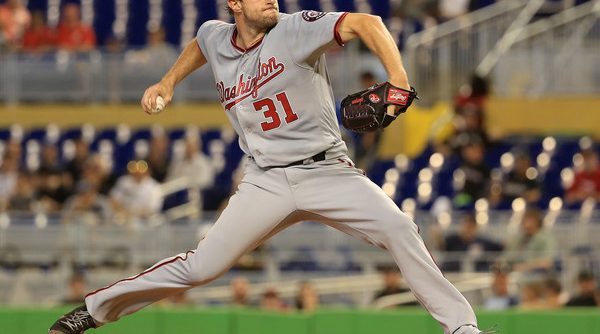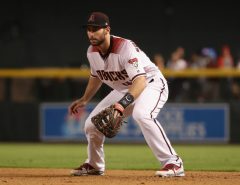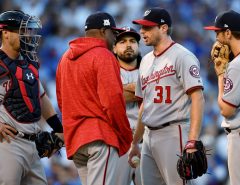On Wednesday afternoon, Max Scherzer (yet again) took a no-hitter into the eighth inning. After a bad luck hit, a couple mistakes, and a key error at first base, the Nationals found themselves on the losing end of a 2-1 decision. Immediately, panic struck #NatsTwitter as fans lamented yet another gut-wrenching loss. And why wouldn’t this be the reaction? The defeat must have pushed them about 6 games back of the Mets, whose super rotation is domina… wait a second…
*Checks National League East standings* *blinks* *shakes head*
It would seem that from the reaction of the average Nationals fan that watches most games, Washington is in a world of trouble and facing impending doom as the Mets run out a dominant rotation of Noah Syndergaard, peak Matt Harvey, and a couple of Sith Lords en route to 105 wins. Fortunately, this is far from the truth. Instead, the Nationals have sustained a double-digit division lead (OK, 9.5 games over the Braves now) in the midst of a middling stretch where they have gone 18-16 in their last 34 games. When you consider the schedule during this time, however, this should not be a surprise. Prior to the year, this month-long stretch was notably difficult on paper – the dreaded west coast road trip, along with the Orioles series that Washington has always struggled with, four games against the Mets and what was supposed to be an elite rotation, plus a visit from another 2016 playoff team in the Rangers.
Consider the positives during the last month: The Nats won a series at Dodger Stadium, they swept the Giants in the Bay, and won three of four at Citi Field. While holding leads has been, and will continue to be, an enormous problem, the offense and the top of the rotation are holding down the fort and then some. As Paul said in this space earlier this week, there is still time to fix the bullpen, and he’s right. The benefit of having an elite offense and rotation is that they can account for the pen in the time being. With the immense failure of the other four NL East teams thus far, looking towards the Fall Classic is not as entirely foolish as it normally might. A few mid-July losses should not cause an uproar that matches that of the fans of a team that just lost its fifth starter from the opening day roster.
Don’t get me wrong: I overreact more than just about anyone I know, but even I can see that now is not the time to make sweeping statements about the low playoff ceiling that this team might have. Give Mike Rizzo a chance to make a few moves — could it be another blockbuster with Chicago that reels in elite reliever Tommy Kahnle and closer David Robertson? — before declaring that there is no hope to be had. Reinforcements are sure to come soon, with the hopes that Erick Fedde and Sammy Solis can kick start the pen without surrendering any prospects. The massive cushion gives the front office a chance to move pieces around and look for creative solutions (even if that is not exactly the kind of ship Dusty Baker would prefer to captain), which means a little patience is in order.
These are the facts, folks. The Nationals bullpen is hurting the team. They often lose close games when they come in. They force Dusty to leave in starters too long in tight situations, like Wednesday afternoon, because there is no one trustworthy to whom he can turn. Two of the opening day starting outfielders are hurt, one of whom will not play until 2018. Tanner Roark is struggling for the most part, possibly a side effect of having a weird role in the World Baseball Classic. All of this, and STILL, the Washington Nationals lead by almost 10 games in the division. As my father often says, “let’s calm down.”
Tags: Nationals, Nats, Washington Nationals




The onus was on Turner on that error – he needs to be making a shoulder high throw on a routine grounder – that error was just as much his as Lind’s – in fact, I lay more blame on Turner.